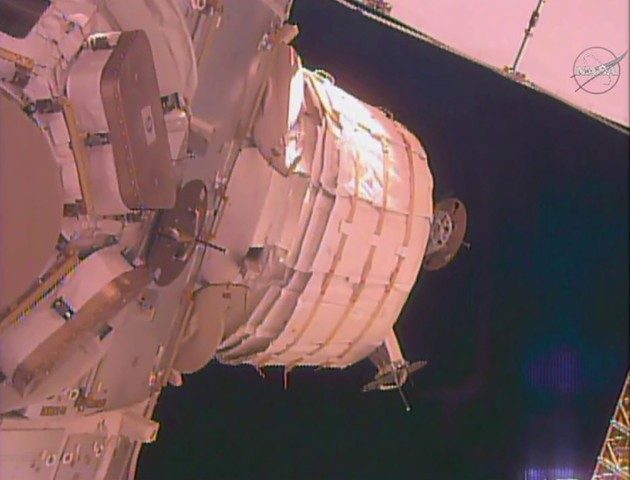NASA Is Trying to Figure Out Why its New Inflatable Space House Won't Expand
The space agency has put on hold the scheduled deployment of a new module on the International Space Station after it failed to expand.
When you’re trying to deploy new technology in outer space that resembles—in the least scientific terms—a bounce house, there’s no room for error.
That’s why NASA on Thursday temporarily abandoned its plans to deploy an inflatable module attached to the International Space Station. The Bigelow Expandable Activity Module (BEAM) is a 3,000-pound, window-less expandable habitat made of metal, aluminum, and layers of soft fabric. It arrived at the orbital station last month to help scientists study living and working conditions in microgravity, which will eventually come in handy during long-term missions, like one to Mars. BEAM was scheduled to be inflated with air Thursday, but the compartment barely expanded after more than two hours, so NASA stopped the process.
Here’s how BEAM should look when it is fully expanded:

And how it looks now:

“Thanks for all your patience today, and we’ll hope for better luck tomorrow," Mission Control radioed, the AP reported.
“That's space business,” said NASA astronaut Jeffrey Williams, who Thursday morning opened a valve to allow air to enter BEAM.
NASA said it is working to figure out what went wrong. The operation could resume as early as Friday.
In 2013, NASA paid Nevada-based Bigelow Aerospace $17.8 million to test BEAM on the space station. When expanded, BEAM measures 7 feet long and nearly 8 feet in diameter. The compartment will remain attached to the ISS for two years, its hatch closed to the rest of the station. Crew members will enter BEAM three to four times each year for a few hours at a time. They will take measurements aimed at understanding how the habitat reacts to temperature changes, solar and cosmic radiation, orbital debris, and other factors—research necessary for the development of similar compartments NASA wants to send to Mars.




